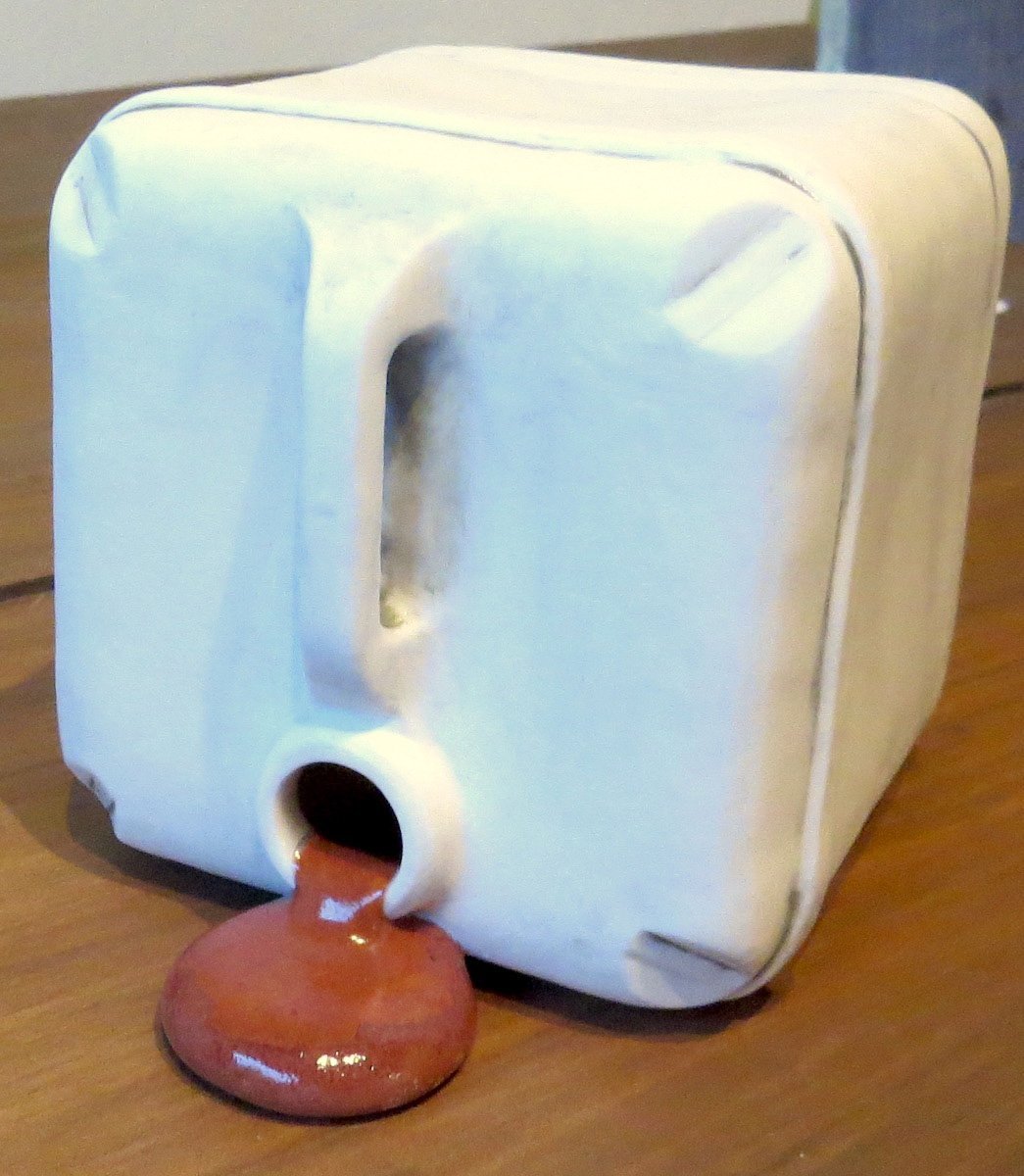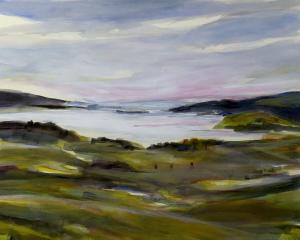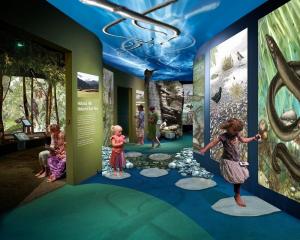James Dignan takes a look at current exhibitions in Dunedin.

‘‘Kahikatea: Moss and Mist’’
Jessica Crothall
(Moray Gallery)
Jessica Crothall’s latest exhibition at the Moray Gallery is a paean to the kahikatea.
The country’s tallest indigenous tree, the kahikatea thrives in wet and boggy conditions, with South Westland being a favourite habitat. It can be the basis for entire ecosystems, becoming the host for mosses, vines and other parasitic plants.
Crothall uses the kahikatea as a symbol of kaitiakitanga, and as a metaphor for society and our need to stand together in unity to protect our land and ourselves from the crises of the modern world.
Inspired by the rainforest, and at least partially by East Asian calligraphy, Crothall has produced works redolent of the damp temperate rainforests of southwestern New Zealand.
Her paintings are structures of bold vertical and lateral trunks and branches, from each of which watery paint has been allowed to run, producing rivulets of colour.
The most effective of these pieces are those in which the bush’s natural colours are evoked, notably in the rich, mossy olive and sage greens of her Forest Lament works.
Works in other colours, such as Kaitiaki Blue and Purple and Yellow Rain are still impressive, yet lack the immediacy of the landscape created by the use of the forest’s natural colours.

‘‘Elise Johnston’’,
Elise Johnston
(Brett McDowell Gallery)
Accumulations, accretions, concretions. All three of these words could be used to describe the miniature sculptural forms of Elise Johnston.
Taking concepts from painting, ceramics, and model-making, the artist has created a series of hauntingly brutalist objects, each built up from individual ceramic items. Inspired by the detritus and sculpture-like geometries of modern urban life - and focusing on the Dunedin townscape - Johnston has created miniature worlds, each of which reflects on the neuroses and dangers of modern industrial and consumer excess.
The pieces become concentrated summaries of the urban wasteland. Oil cans, torn posters, corrugated iron and down pipes jostle for attention alongside the shrubs that are a nod to the vestigial remains of nature. The dark side of the city is effectively portrayed.
Among the stand-alone sculptures are a series of wall hangings on a similar theme. These are, in general, less busy - and in two cases inspired by Piopiotahi/Milford Sound - and are surprisingly calm.
School Run with its passing array of roofs, is one of the more impressive works in this style.
Perhaps the stars of the show, however, are the simplest pieces, a series of ceramic shipping containers and jerry cans, which distil the essence of the industrial jungle into a simple symbolic form.

‘‘Rehoming Lobsters’’
Hannah Joynt
(Olga)
A third take on the dangers of over-consumption and environmental damage is presented by Hannah Joynt at Olga.
With tongue at least slightly in cheek, and immersing the viewer in surreal fantasy worlds, the artist presents images that are at once joyous and dystopian as she charts our gleeful destruction of natural resources - in her words, that of ‘‘a gawky apex predator on an adventure, trailing a lot of mistakes’’.
This is a post-apocalyptic world, the after-party to end all after-parties.
A young boy climbs in VR mountain scenery while actually on a stack of rubbish populated by feral cats. People play mini golf in an overpopulated wasteland. Lobsters are moved from one side of a pile of discarded waste to another.
People either take unnecessary piles of plastic to the outdoors, or bring an ersatz nature into their homes (the latter with a knowing reference to van der Velden’s iconic image of a wild New Zealand river).
The bright colours and quirkiness of the scenes adds a humorous element to what would otherwise be tellingly dark works.
A second exhibition is presented alongside these works - a series of intriguing woodblock portraits by Tāwhiri Fowler.
The artist, still a teenager, shows some impressive promise in these works.












